The first of our outlying island stay would be in Rebun Island, the northernmost inhabited island in Japan.
During the travel season in spring and summer, there are 3 direct ferry services per day from Wakkanai. The first one is just after 6 am(!) and takes about 2 hours. For visitors who only have time for a day trip, this should still give enough time for a quick tour of the island. But obviously, it’s only possible to make this early ferry if you stay in town or take the overnight bus!
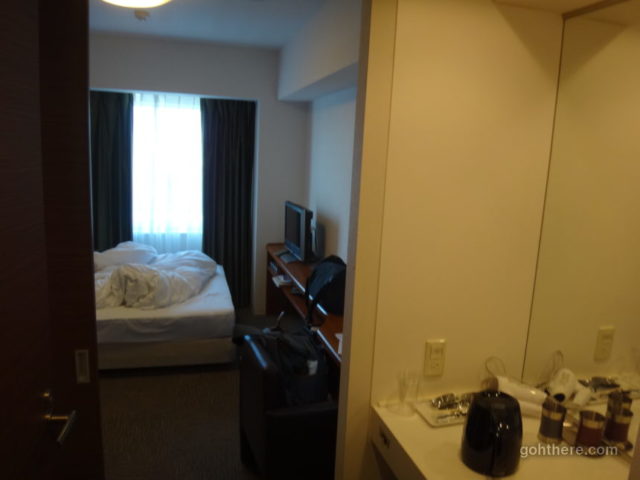
Leaving the Wakkanai Dormy Inn Hotel – it’s so early the hotel breakfast hadn’t started yet! (it’s a bit expensive anyway…)
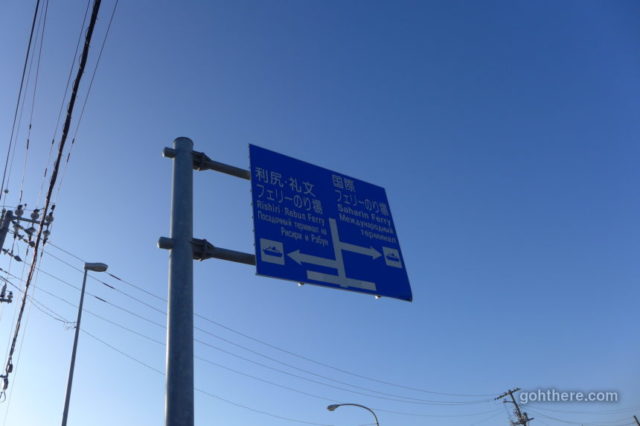
The ferry terminal is about 15 minutes walk away. That’s some distance from the train station – had to walk quickly as we didn’t have much time to spare in the morning. Opposite that is another ferry terminal for international service to Russia!
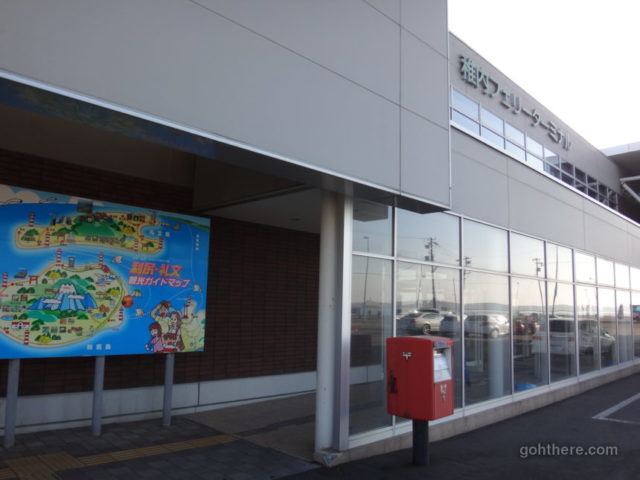
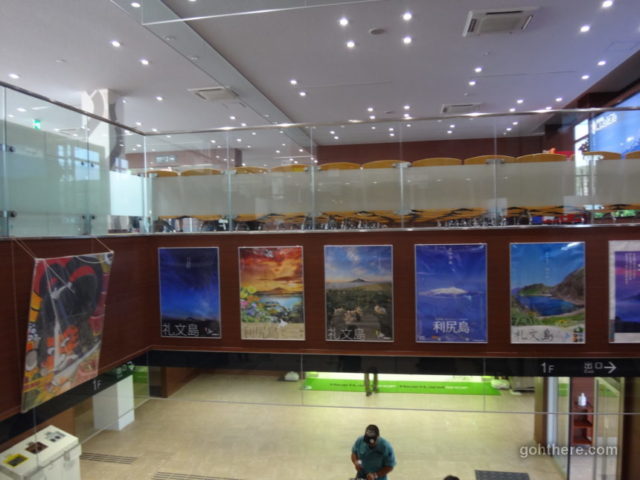
Second floor in the terminal. Many posters of Rebun and Rishiri Island.
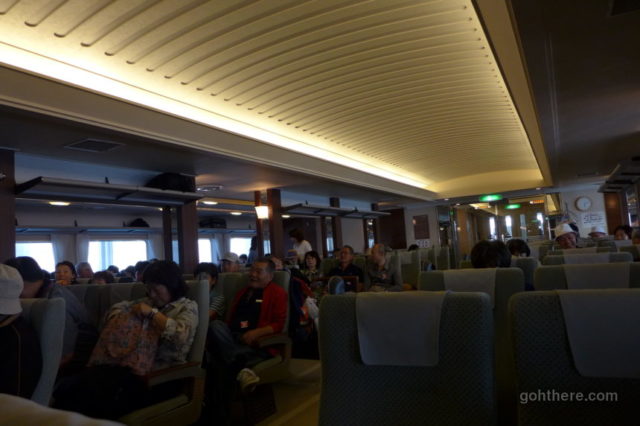
On board. Don’t get the wrong idea just because Rebun is considered an outlying island – it’s actually a reasonably popular travel destination, and the ferry is large and new.
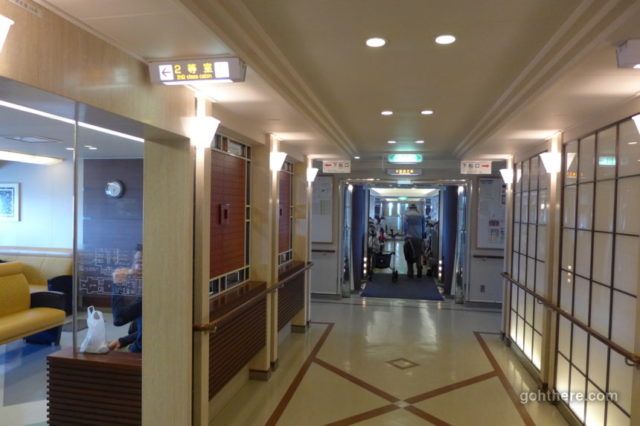
In the ferry – very bright and spacious.
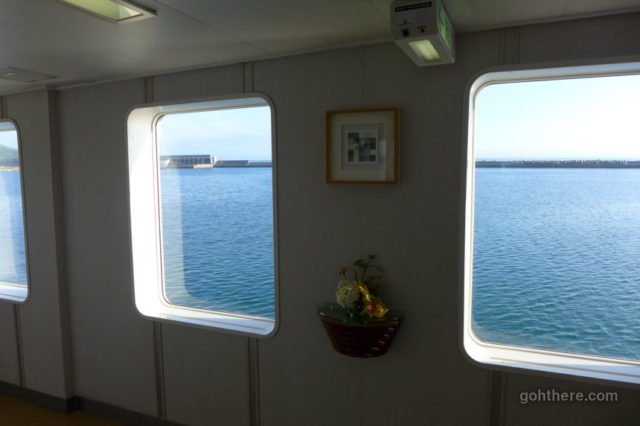
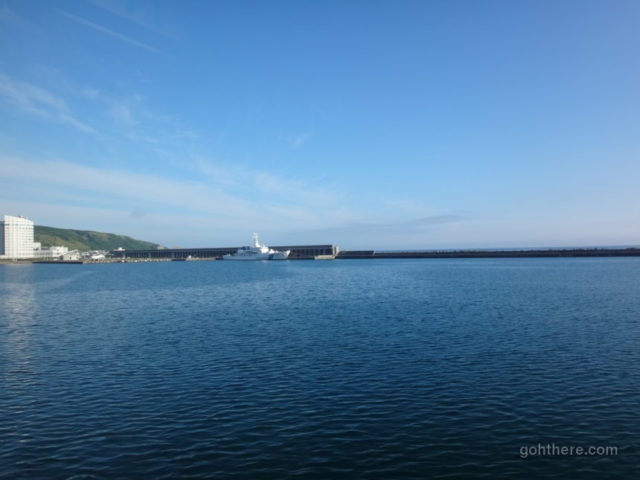
Departing! See the long Kita Bohatei Dome on the left, which we visited yesterday. The boat in front is the Japan Coast Guard.
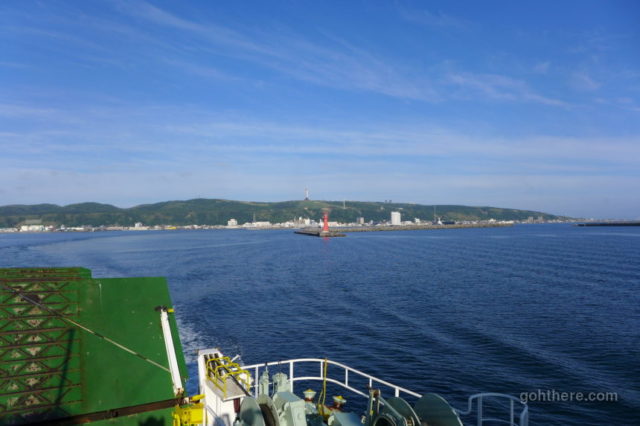
Good view from the deck on the back of the ferry.
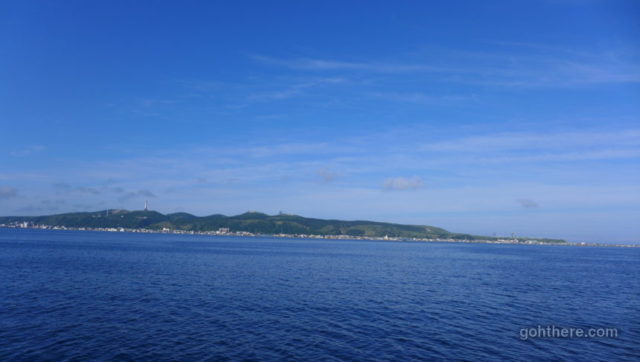
See you soon Wakkanai – we’d be back in 4 days!
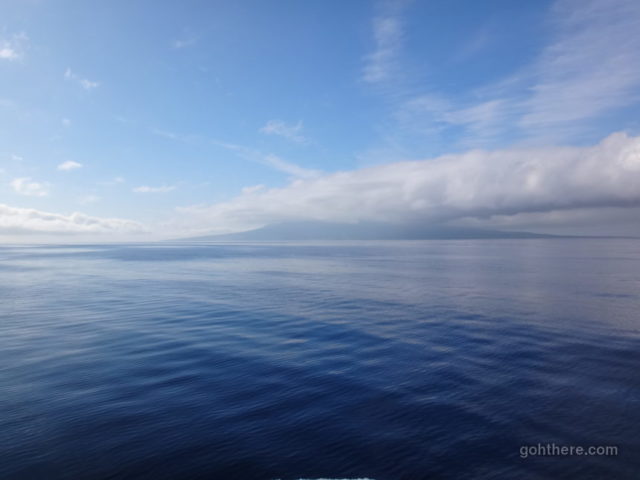
En-route to Rebun Island, Rishiri Island should also be visible, with its very distinctive cone shape mountain in the middle. Unfortunately today the top of Mount Rishiri was shrouded in clouds.
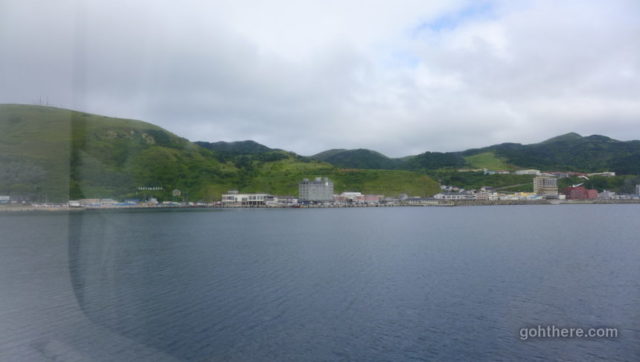
Approaching Rebun Island! Sky looking a bit gray…
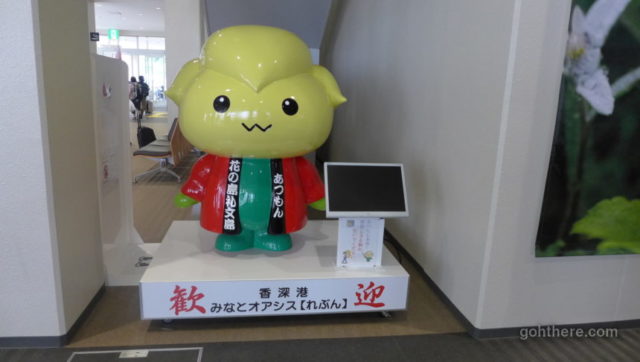
Greetings from the Rebun Island Mascot “Atsumon” (あつもん). It represents the flower Atsumoriso (あつもり草) which is a unique species here.
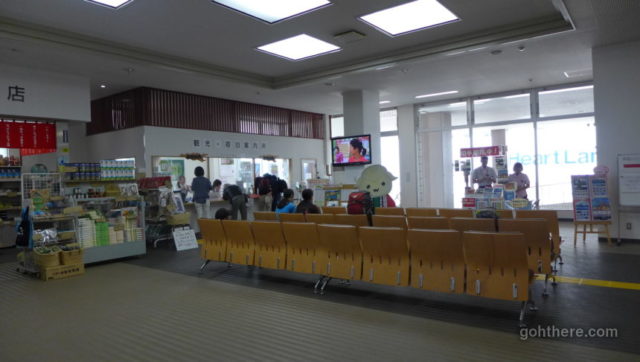
1st floor of the Kafuka Port (香深港) ferry terminal. Most of the accommodation in Rebun should have pick up service, and they would enquire for your ferry arrival time during booking. The host / hotel staff would be waiting at this place holding a banner or something with the accommodation name.
We had booked two different places for the two nights that we’d be staying in Rebun – the first in the northern part of the island and the second near the south. The island is kind of a narrow vertical shape, and to give an idea of its size, it takes over half an hour to drive from north to south. The places of interest are mainly on the two ends of the island, so it helps to save some travel time and cost (oh yes, the local buses are expensive!) by staying at a place nearby.
For the first night we’d be staying at “Hotel Rebunso” (ホテル礼文荘), which regardless of its name is definitely more of a guesthouse. I was a bit concerned as I had read a guest review that the staff had failed to turn up for pick up, and the guest was left waiting for half a day. The ferry terminal is near the south of the island in the main town Kafuka, while Hotel Rebunso is in the north, so it’s not so easy to get to. But it turned out to be all good when we arrived at the waiting area, and found a polite young man holding a banner waiting for us.
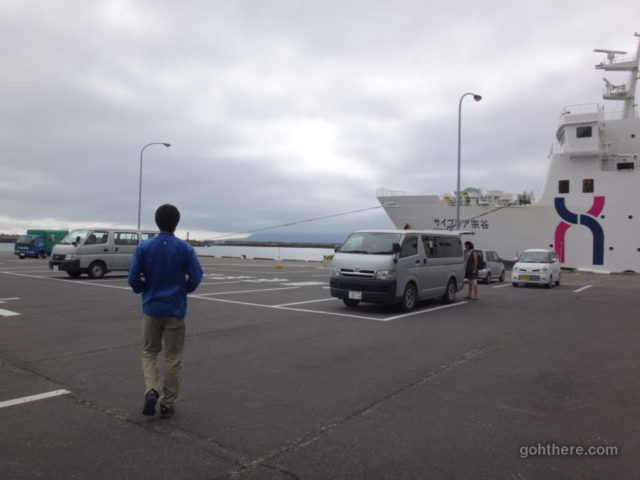
Staff leading us to the van at the terminal car park. For today we were the only guests taking the early ferry.
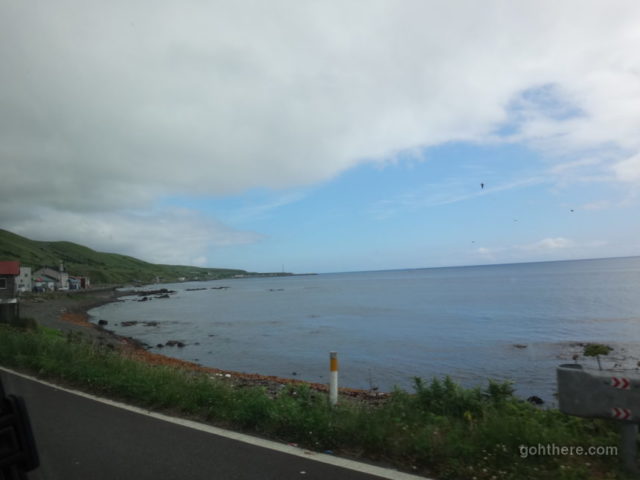
A half-hour drive along the east coast of the island to the north.
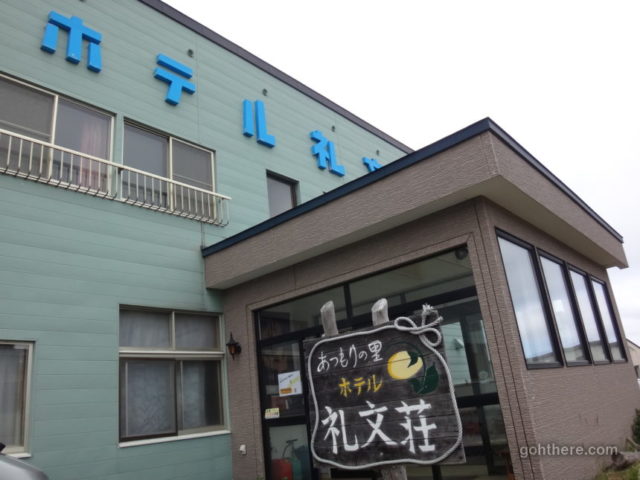
Entrance of Hotel Rebunso.
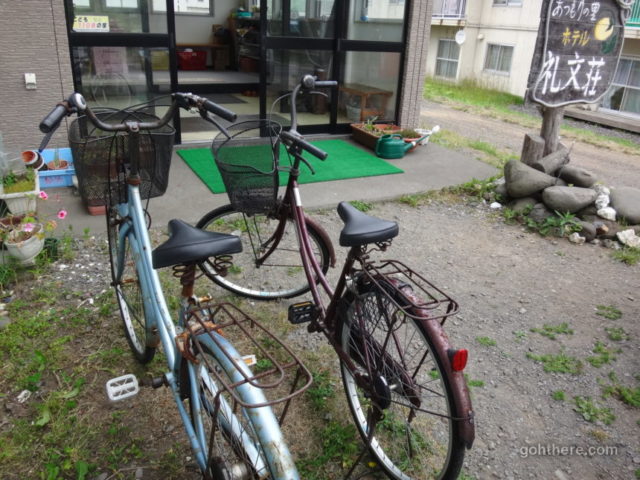
Hotel Rebunso is near the town Funadomari (船泊) on the northern part of the island, and the coast is a series of sand beaches. The most interesting thing is you’re supposed to be able to see seals there – and the hotel staff mentioned so as well. We were also told there was a grocery store and an eatery (note, no plural!) in town. So that’s our first destination as we were getting hungry.
There were some bicycles for guests to borrow and I thought to go with them. We pedalled for about 5 metres and then promptly returned – these bicycles were so rusted and the brakes squealed like we’d wake up the whole island.
So we decided to walk a bit – it looked close on the map, but it’s still at least 15 mins away.
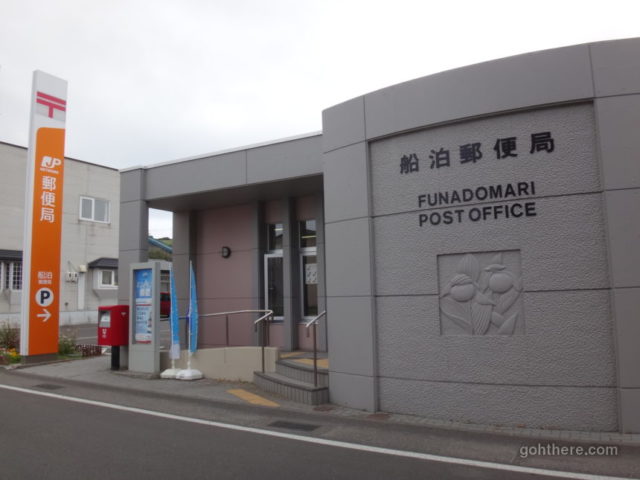
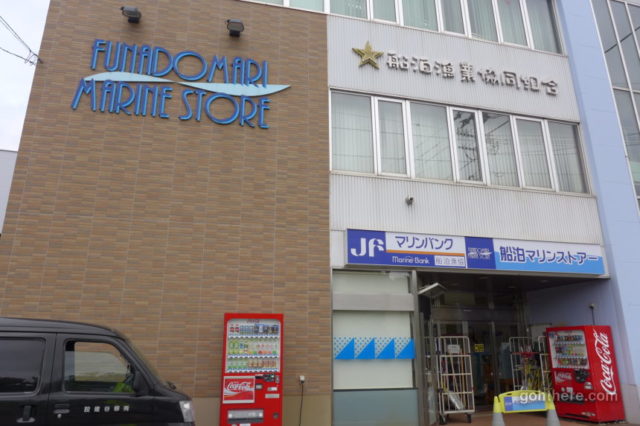
The only eatery in this town was apparently still closed (it’s only 10 am). But fortunately the store / supermarket “Funadomari Marine Store” was open.
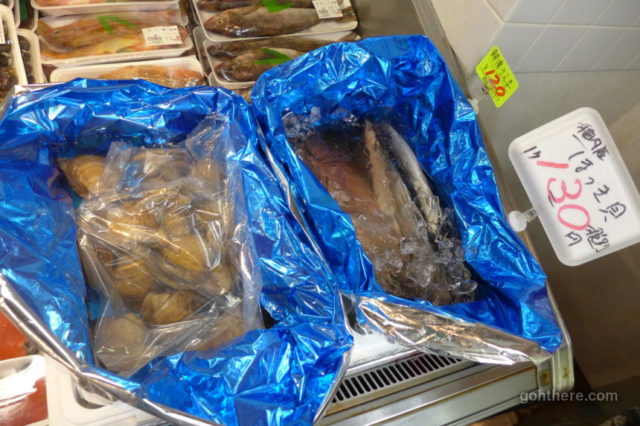
There was a small fridge selling seafood. Most were local Hokkaido produce and amazingly cheap – a big clam from Wakkani for only 130 yen!
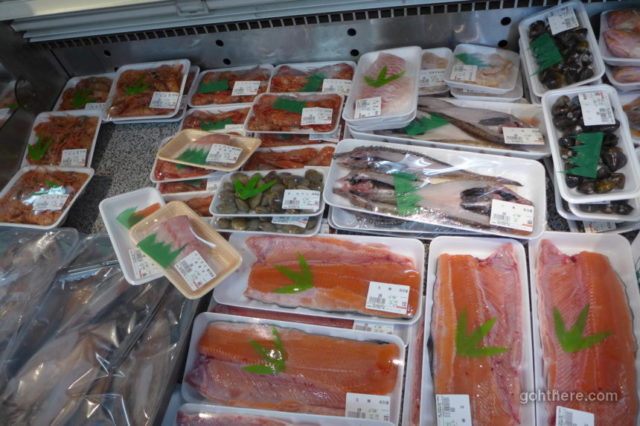
And many more!
My wife bought a pack of raw prawns as sashimi, but not much else can be eaten raw, and I’m not a big fan anyway. It would’ve been so nice if we had brought our camping gas cooker – then we’d be in for a sumptuous seafood barbecue!
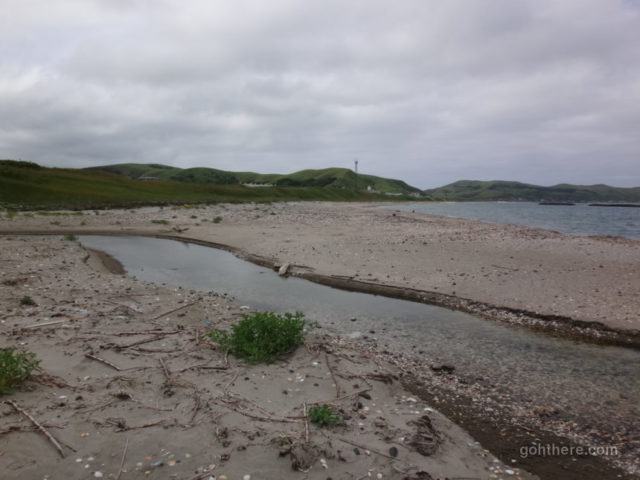
Having stocked up on some food, we went on to find the beach. It’s one of those cases where it seems so close on the map but turned out so hard to get to. Eventually we kind of walked through someone’s backyard to reach this place – and we couldn’t get over this stream! (It looks shallow, but actually not)
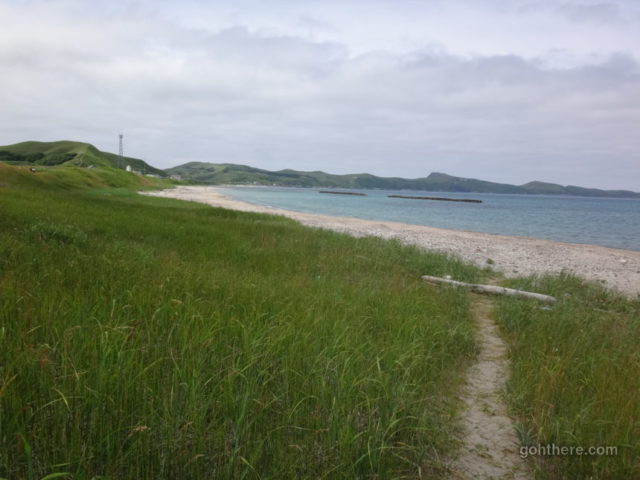
Eventually we found another way… we could sit down and have some food.
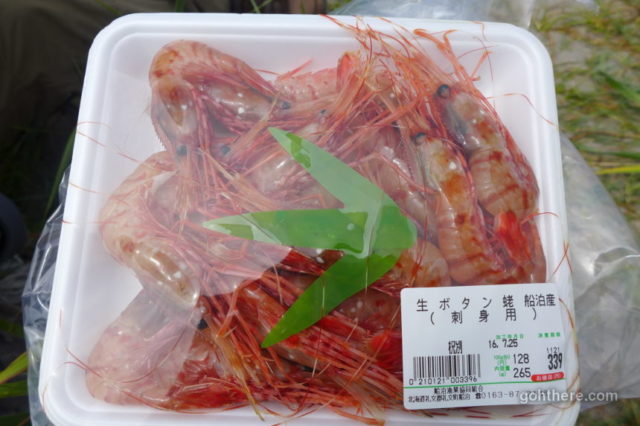
The pack of fresh prawns bought from the supermarket. Caught locally in Funadomri, so many for 339 yen only!
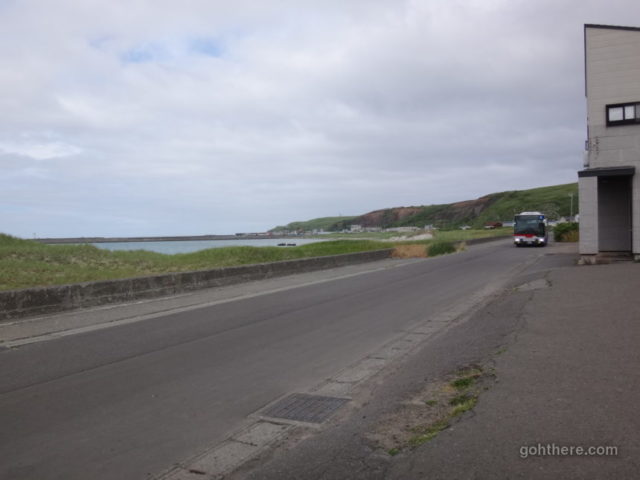
Despite what the hotel staff claimed we were disappointed not seeing any seal around the beach. But anyway. It’s just about time to catch the very infrequent local bus, which would bring us to the northern most point of the island Cape Sukoton (スコトン岬), one of the main sight-seeing points here.
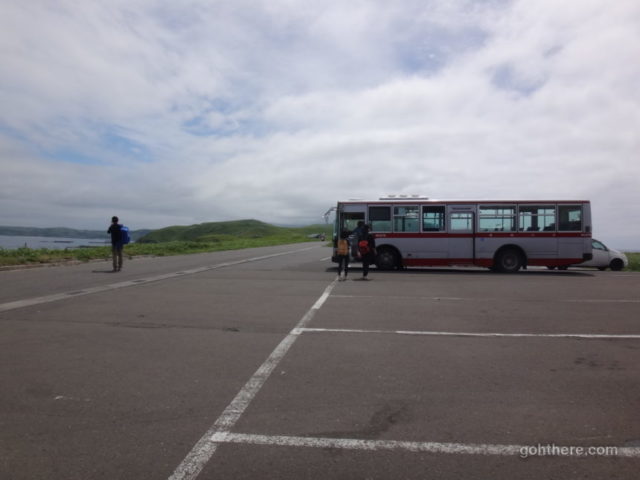
Car park at Cape Sukoton. This is also the terminal station.
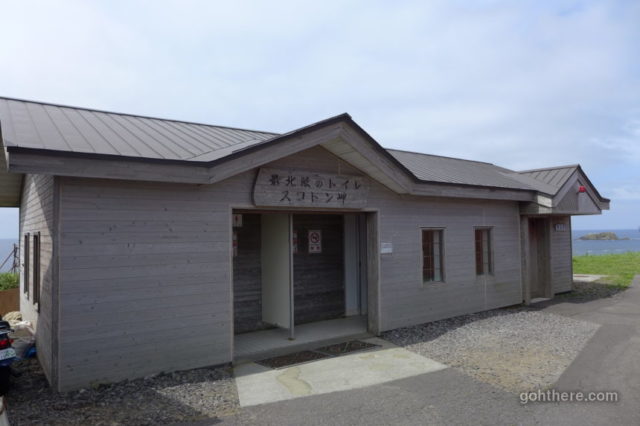
Cape Sukoton is the northernmost point of Rebun Island, and this toilet there proudly declares itself as the northernmost toilet (最北限のトイレ).
Note that Cape Sukoton is just a bit short of being the northernmost point of Japan though, for which the honour goes to Cape Soya in Wakkanai (where we were yesterday)
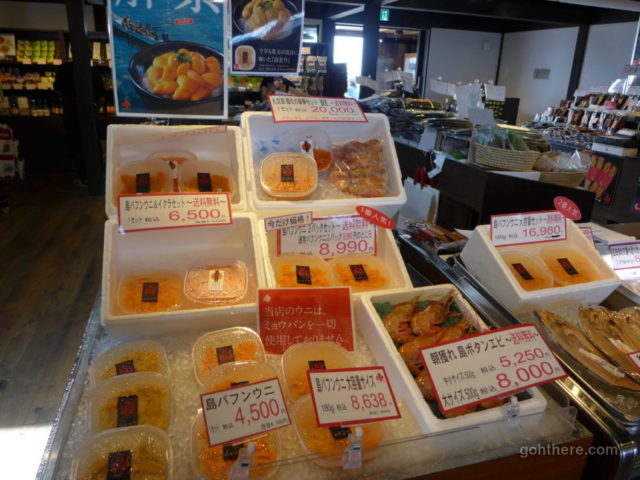
Once at Sukoton you can’t miss the souvenir shop which looks quite new and modern, especially considering how “remote” this is. The main item for sale is the local speciality – sea urchin.
Sea urchin from Rebun Island is often considered as highest quality in Japan. They leverage this fame and market it under their brand “Island People”(Shima no hito) (島の人); and together with a well-maintained online shop, this is certainly not the typical mom-and-pop store.
As expected in Japan where anything can be made into a soft-serve ice cream flavour, this place has seaweed (“konbu”) flavour. We didn’t bother…
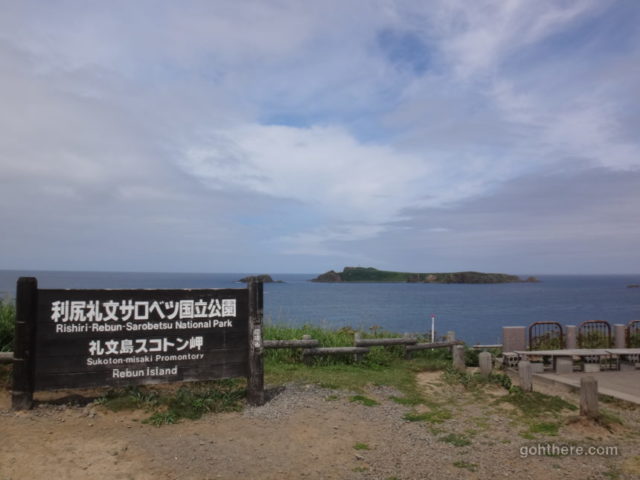
Going past the dominating souvenir shop you finally get a view of the cape.
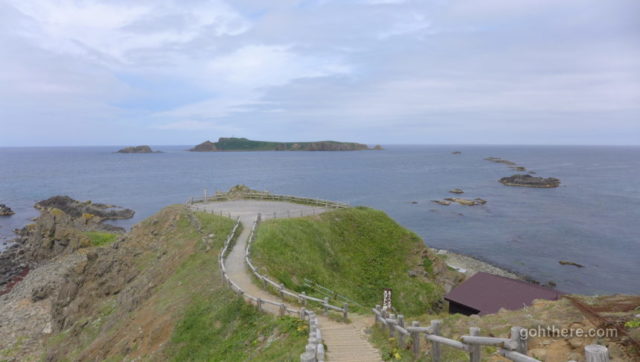
And some stairs past the sign board lead to another viewing area. That is as far as visitors can go.
There are a series of small rocks / islands further to the north, but these are uninhabited. If lucky, seals can be seen sun-bathing on these islands; but we didn’t spot any.
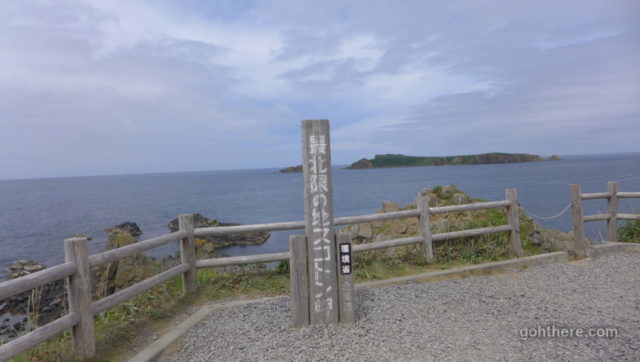
“Northernmost point, Cape Sukoton” (最北限の地スコトン岬)
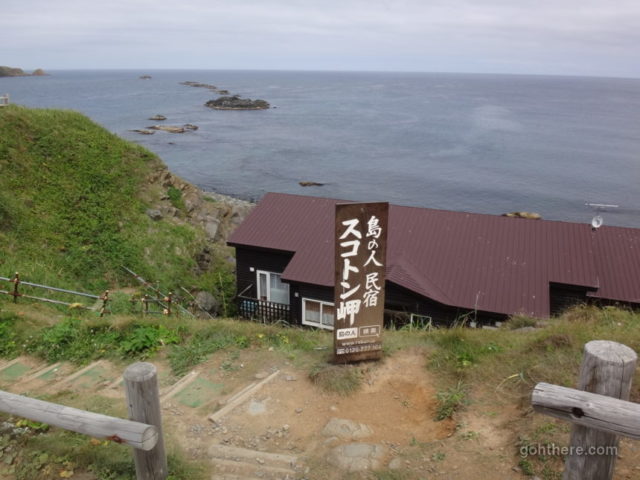
Right next to the sea is a guesthouse – managed by the same group as the souvenir shop. This is probably the northernmost guesthouse – and the sea view here is great. Price is definitely of the high range though.
We took a bit of rest here, before embarking on the hiking course called “roam the capes” (岬めぐりコース)